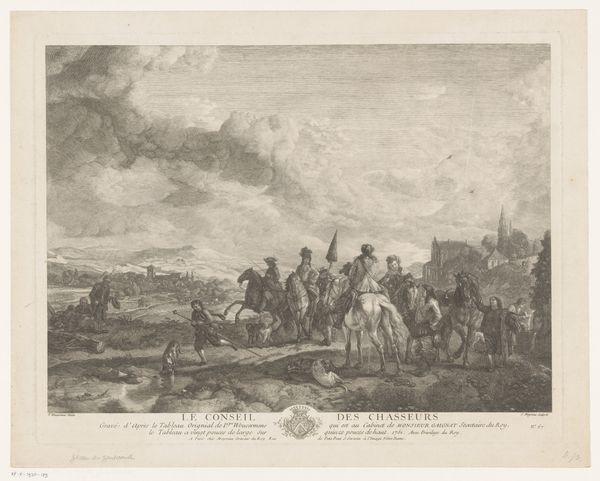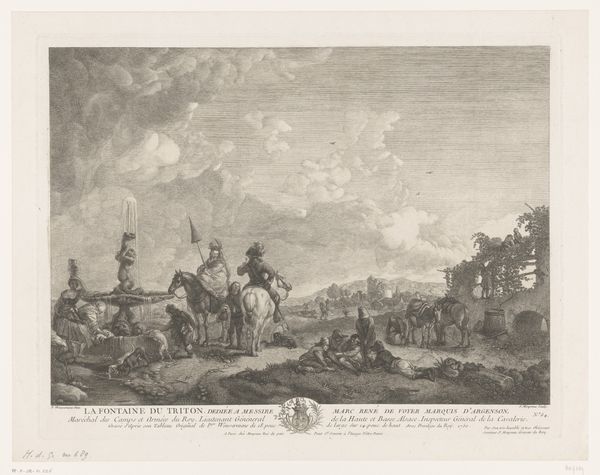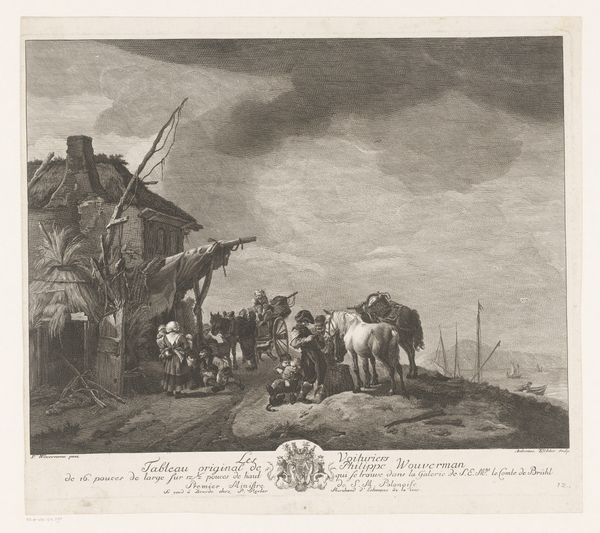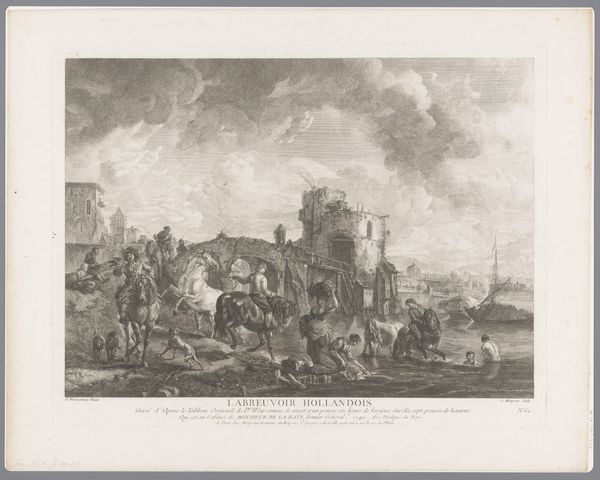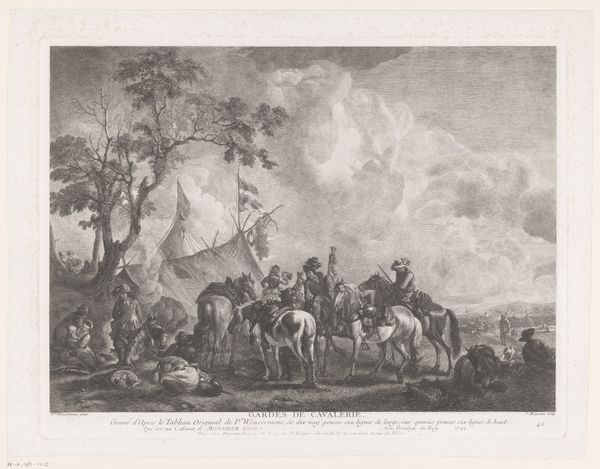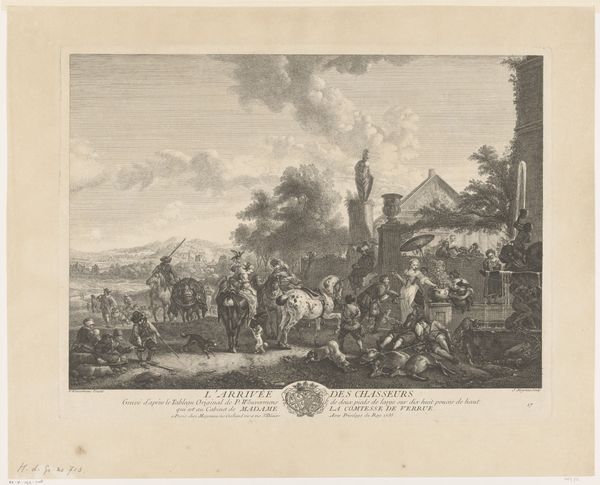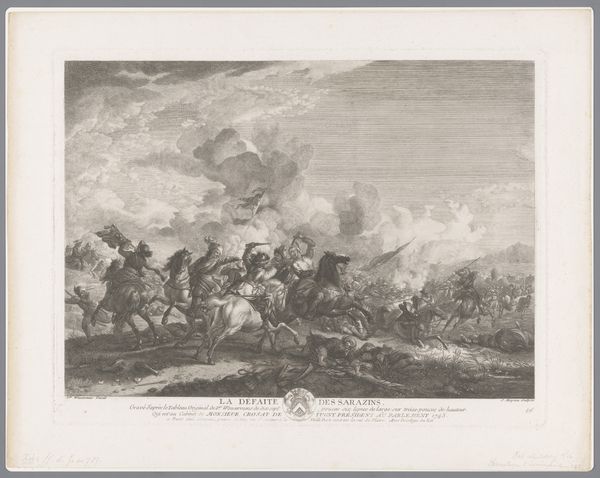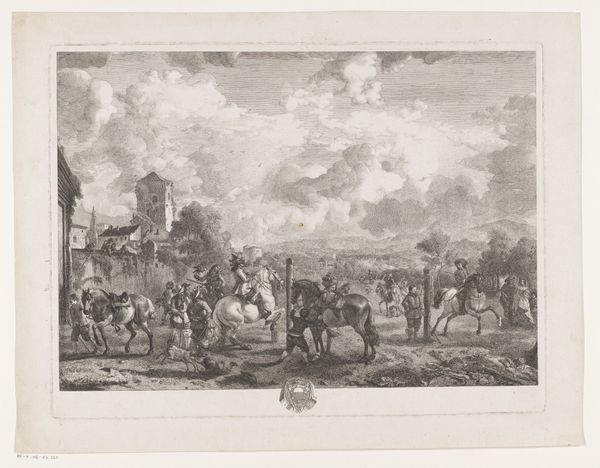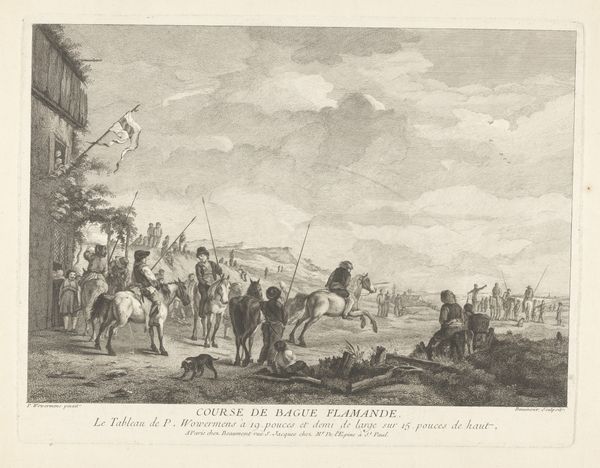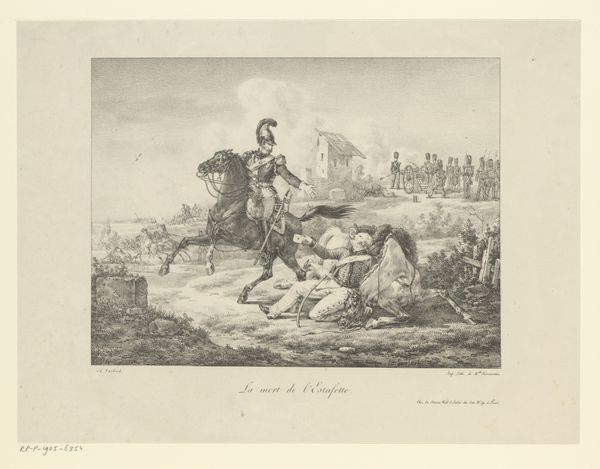
Figuren in een drukke haven met een brug op de achtergrond 1755 - 1763
0:00
0:00
quentinpierrechedel
Rijksmuseum
engraving
#
portrait
#
reduced colour palette
#
muted colour palette
#
baroque
#
ship
#
old engraving style
#
landscape
#
line
#
cityscape
#
genre-painting
#
engraving
Dimensions: height 390 mm, width 497 mm
Copyright: Rijks Museum: Open Domain
Curator: Look at this fascinating engraving, “Figuren in een drukke haven met een brug op de achtergrond,” or “Figures in a Busy Harbor with a Bridge in the Background,” by Quentin Pierre Chedel. Dating back to sometime between 1755 and 1763. Editor: It’s amazing, almost bustling, even though the colour palette is so subdued. It feels like a faded memory, a glimpse into a world that once was, yet still echoes with the murmur of daily life. There’s something undeniably romantic about it. Curator: Definitely. See how he’s captured the essence of a port city. There are people loading goods, some on horseback, a little boat crowded with passengers and what looks like ruins on the edge of the water. The bridge seems to signify the connections, physical and societal, that tie this all together. It’s a narrative landscape, isn’t it? Editor: It is! I’m particularly drawn to how Chedel depicts movement. The horses straining, the figures huddled in conversation – each carries a story. It’s a little like peeking into individual lives, yet also observing the grand flow of commerce and human activity. Curator: Precisely. It’s quite Baroque, isn’t it, in its dramatic use of perspective and light, despite the medium being so different from paint. All of these small marks communicate something large. You mentioned its “romantic” quality – I think that speaks to a wider interest in landscapes and the lives of ordinary folk that grew in popularity in that time. It moves away from strictly formal portraiture or grand historical scenes. Editor: I see it as a reflection of a society in flux, you know? The burgeoning merchant class and the continued presence of, well, beasts of burden, cheek to jowl together in this busy harbour. The etching perfectly capturing a sense of tension, perhaps, between progress and tradition. Curator: Exactly. The “old engraving style,” as our metadata says, brings a sense of historical weight, but it also gives a certain ethereal quality. Editor: In a way, it allows the past to speak directly to the present. Looking at it I can hear echoes of their lives. Curator: Absolutely. This unassuming little engraving has a lot to tell us about who we were.
Comments
No comments
Be the first to comment and join the conversation on the ultimate creative platform.
